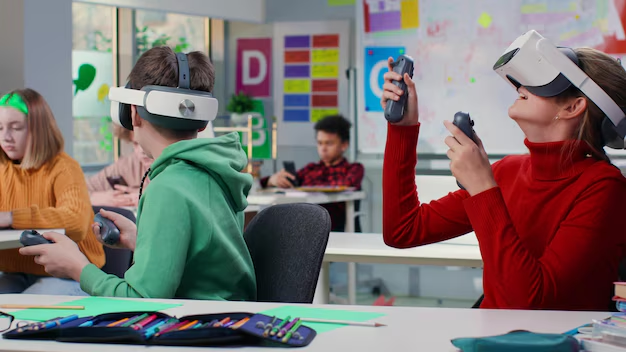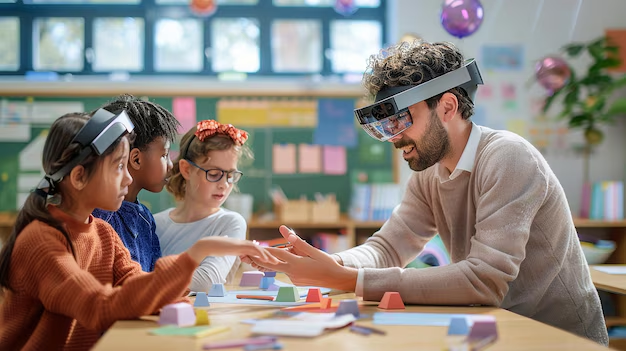If you’ve ever heard the phrase multisensory learning and wondered, “is multisensory learning evidence based?” — you’re not alone. Today, we’re diving into what is multisensory learning, how it connects to brain-based learning, and why it’s becoming such a trusted approach for helping students, especially those with learning challenges like dyslexia or ADHD.
Let’s break it down in a simple, friendly way so you can feel confident about this powerful learning method.
What Is Multisensory Learning?
At its core, multisensory learning is exactly what it sounds like: engaging more than one sense at a time during lessons. Instead of just listening to a lecture or just reading from a book, students might see, hear, touch, and even move while learning a concept.
Multisensory strategies could include:
- Using sandpaper letters to learn the alphabet (touch + sight)
- Singing songs to memorize math facts (hearing + movement)
- Acting out vocabulary words (movement + speech)
The idea is simple but powerful: when we engage multiple senses, the brain creates stronger, more lasting connections. That’s why multisensory education is a cornerstone of many successful teaching approaches, including Orton-Gillingham and Lindamood-Bell programs.
How Multisensory Learning Works in the Brain — Is Multisensory Learning Evidence Based?
One of the reasons multisensory learning is so effective is that it mirrors how the brain naturally processes information. Instead of relying on just one pathway (like sight or sound alone), multisensory input strengthens neural connections across multiple areas of the brain.
This method taps directly into brain-based learning principles, helping students absorb and retain information much more easily. When more parts of the brain light up during learning, it becomes easier to remember and use that knowledge later on.
Is There Scientific Evidence Behind Multisensory Learning?
The short answer? Yes, absolutely.
Brain-based learning research shows that the brain processes information more effectively when multiple senses are involved. When students simultaneously engage their visual, auditory, and kinesthetic learning systems, they are building stronger neural pathways, making it easier to store and retrieve information later.
Several studies highlight how multisensory reading instruction improves decoding skills, comprehension, and memory, especially for students with dyslexia and other learning differences. Programs that use multisensory activities tap into the brain’s natural preference for rich, varied input, making learning not only more effective but also more enjoyable.
So when parents ask, “Is multisensory learning evidence based?”, we can confidently say: yes — and it’s supported by decades of research on how our brains learn best.
Is Multisensory Learning Evidence Based for Struggling Learners?
Students who face reading, writing, or attention challenges often struggle with traditional, single-sense learning methods. Multisensory strategies offer them new ways to engage with material that might otherwise feel confusing or overwhelming.
Instead of forcing a child to “just read harder” or “pay more attention,” multisensory activities offer different pathways to understanding — turning learning problems into learning victories.
How Multisensory Learning Supports Reading Instruction
One of the biggest areas where multisensory strategies shine is in reading instruction. Traditional methods that rely heavily on visual input (just reading words on a page) often don’t work well for students with learning challenges.
Multisensory reading instruction involves activities like:
- Tracing letters while saying their sounds
- Using color-coded letters to show different phonemes
- Air-writing words while spelling them out loud
By blending movement, sound, and sight, students not only learn faster but also retain information longer. It turns abstract symbols — like letters and sounds — into real, tangible experiences.
At Learnability, we specialize in multisensory education because we know that when students experience learning with their whole body and mind, they’re more likely to succeed.
If you’re looking for a way to make learning stick (and to make it fun again), contact us today to find out how our personalized learning programs can support your child’s journey.
Examples of Effective Multisensory Activities
Multisensory activities don’t have to be complicated. Some of the most effective strategies are simple to do at home or in the classroom.
Here are a few examples:
- Writing sight words in shaving cream (messy but memorable!)
- Jumping to different syllables while breaking apart words
- Listening to audiobooks while following along with the text
- Building spelling words with magnetic letters
- Using Play-Doh to form letters and words
The more senses involved, the more brain pathways are activated, leading to stronger learning outcomes. This is the heart of brain-based learning in action — and more proof that multisensory learning is evidence based and effective across all age groups.
Can Multisensory Learning Help All Students?
While multisensory methods are often recommended for students with dyslexia, ADHD, and other learning challenges, the truth is — multisensory learning benefits everyone.
Even students without diagnosed difficulties perform better when lessons are engaging, hands-on, and involve multiple senses. It makes learning feel more real, more memorable, and yes, even more fun!
Why Choose Learnability?
We specialize in multisensory education because we understand the power of engaging multiple senses to help children with learning differences like dyslexia, ADHD, and autism. Our expert tutors use proven techniques like Orton-Gillingham, Wilson, and Lindamood-Bell to provide targeted support that meets each child where they are. Whether your child needs extra help with reading, writing, or math, we’re dedicated to providing brain-based learning strategies that work.
Let’s build a brighter future together — Contact us today and find out how we can support your child’s journey.
Final Thoughts
Multisensory learning isn’t just a buzzword; it’s a research-backed, student-proven method that helps unlock a child’s true potential. Whether through multisensory reading instruction, hands-on math activities, or movement-based games, engaging multiple senses makes learning more natural and more lasting. For students facing learning challenges, multisensory approaches can be the key to turning frustration into confidence.


